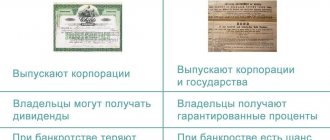attracting customers increasing sales
27.05.2020
Author: Academy-of-capital.ru
Add a comment
Rating:
| (Votes: 2, Rating: 5) |
From this material you will learn:
- The benefits of knowing what type of buyer you are
- 5 types of B2B buyers based on how they close deals
- 8 Psychological Types of B2B Buyers
- Main types of retail buyers
- 8 Psychological Personality Types of Retail Buyers
- Different Types of Online Shoppers
- Types of buyers by their “color”
- 4 types of buyers depending on temperament
What types of buyers are there? Inexperienced managers or salespeople often believe that all customers can be divided into only two categories: good and bad. The first ones are those who take a lot of goods at once, and without any questions asked. The latter will exhaust all their nerves, and then leave without buying anything.
In fact, a lot depends on the seller. If he finds the right approach to the person, then the transaction will take place, and the buyer will ultimately turn out to be “good”. If the manager is really weak professionally, then he will have to classify most of his clients as “bad guys.”
Fortunately, not everything is so sad, and the problem is completely solvable. To do this, the seller must learn to immediately determine the type of client and, based on the conclusions made in his mind, follow a certain strategy of behavior. In the vast majority of cases, this system works.
The benefits of knowing what type of buyer you are
The ability to recognize a client's type and accurately resolve their problem is not common to everyone. This comes with experience. But, having professional intuition, you can build communication in a beneficial way, competently present the advantages of the product, quickly work out objections and, what is important, establish strong and trusting connections. Simply put, make a person a regular customer.
There are three points that relate to the client’s personality and determine the sales result - demand, significance and motivation. By learning to apply these factors to individuals, you will become a successful salesperson. Communicating with any type of consumer requires flexibility and the ability to choose a conversation style.
When interacting with a client, you need to know three rules:
- in reality, you rarely meet a pure type of customer;
- the buyer cannot be “bad” or “good”;
- Sales success is influenced by situations that are always different.
When entering into a conversation with a client, it is important to understand his character and specifics of communication in order to correctly structure the conversation. You need to grasp the psychotype of a particular person and choose how to behave in response to objections and other manners of the interlocutor. That is, to be fully armed.
Anyone who is confident in the power of his suggestion will always be convincing. Which means it will sell more. If you know (as marketing teaches us) the types of buyer behavior, it is easier to establish connections with them, identify needs, and get on their wavelength. These are the tasks of an experienced manager.
If your field is B2B sales, and your clients are enterprises and firms, you need to clearly know all the decision-makers of your organizations that are relevant to your issue. Typically these are department heads, purchasing agents or managers. All information can be obtained from the secretary, who has it in full.
Having found out who is responsible for making decisions, make inquiries about him (character, important habits, hobbies, etc.). The faster you determine the personality type of the decision maker, the more effective the communication will be. Be flexible to accommodate any individual and successfully complete the transaction. Try not to use templates, they narrow the circle of potential buyers. If you feel antipathy towards an employee with whom you have to negotiate, this does not mean that you need to give up the wide prospects of a mutual partnership.
Consumer and buyer
In everyday consciousness, these two concepts are synonymous. However, in marketing they are distinguished. A consumer can become a buyer if he has the resources to make a purchase, motivation and opportunity. But the buyer may not be a consumer. So, if I buy goods to fill the shelves in my store, then I am not a consumer of these goods. Differentiation of these concepts is necessary in order to understand the difference in the motivation of each. The consumer purchases a product for himself, and the consumer properties of the product are very important to him: quality, service, functionality. And the buyer may seek to benefit from the purchase and is more interested in the price and terms of purchase (delivery, discounts, forms of payment). Therefore, for example, the classification of energy consumers and buyers of the same resource will be very different. The consumer cares about uninterrupted power supply, its price, network maintenance, and warranty. But for the buyer, all related characteristics are not important; he purchases energy for resale to consumers, he is only concerned about the cost of the resource. The relationship between the buyer and the seller is regulated by the Civil Code, and the relationship between the seller and the consumer is regulated by the Law on the Protection of Consumer Rights.
Main types of retail buyers
The classification of clients in B2C sales depends on how they act in the transaction process. That is, your target audience should be divided into groups where buyers of different types behave in similar ways.
- Potential clients These are regular visitors to your website (group, store) who study new offers, but do not buy anything. Their questions require the fastest possible response. You can recommend to such clients the help of a consultant to help them choose a product (its size, composition, functionality, other indicators from your sales area).
- Newbies
You need to make a good impression on people who come to you for the first time (to a website or page, to a store). First, analyze your online platform: is everything clear and accessible, and how aesthetically pleasing is the design? Check resource traffic, answer questions from your target audience in a timely manner. - Regular customers
These citizens know your product range and sales rules. They like the products and the quality of the salespeople. You have established long-term contact, you know the needs of these people and their capabilities. Such buyers regularly visit your company to purchase familiar and favorite products. - A person without preferences
The most complex consumer who has not decided exactly what he needs. In addition, these people often doubt the usefulness of the purchase. Start a conversation with such a client and offer assistance in choosing. Direct the conversation in the right direction and help the other person make a reasonable decision.
Classification of clients and marketing tasks: who and what have I forgotten?
24 November 17:08
Attention: longread. But very useful. Read to the end. There are different ways to segment customers. I want to share my approach with you. All clients can be broadly divided into two groups - “ours” (they already know us and buy from us) and “not ours” (they don’t know, they don’t buy). “Ours” (buying) are divided into two groups - “not yet” and “already yes.” “Not ours” (they don’t buy) are two groups of customers: potential and strangers. Let's take a look at these customer groups and the subcategories/types of customers within them—and, most importantly, the resulting challenges. Clients of the “Ours” block Not yet” are divided into two groups - converts and non-customers.
Converts.
This can be called those potential buyers who contacted your company: they called, wrote a request, visited the website, subscribed to the newsletter, became friends on social networks... Each contact should ideally be a marketing lead.
Lead is not a well-known/understood marketing term. So let's start with the definition. Lead is a potential client who has: 1. contact information 2. desire to buy 3. budget/money (and the desire to buy is more important than having money - if there was a desire, the money would be found. In addition, wise companies offer payment options that are convenient for the client / purchasing a product - factoring, installment plan, credit...) If one of these three criteria is missing, this is not a lead.
Referral marketing objectives:
- provide the sales department with the necessary number of high-quality, targeted leads;
- create a lead (request) in CRM;
- determine the “temperature” of the lead and then heat it (from cold to warm, from warm to hot...).
You can read about how to warm them online in Vitaly Myshlyaev’s pushbook “iMarketing”. The same approaches should be used for offline clients.
Underclients
These are converts with more serious plans, interests, and intentions. They are serious - they came to your office, met with you in their office or on neutral territory - but, to your regret, they did not buy anything after the meeting. These are the ones you didn’t get to buy at the meeting.
The task of marketing for non-customers:
- press as quickly as possible until they purchase from you.
When I worked as marketing director at the MIAN real estate agency, we created the “Non-Clients” program, which included several dozen marketing activities. It was obvious that if a potential buyer reached us, it means he is a hot buyer - and with a high degree of probability he has already been with our competitors or will go to them after meeting with us. Didn't buy from us during the meeting? - we immediately turned on the “Non-clients” program and pressed the “non-client” until the deal - or until the sad answer for us “Sorry, I bought it somewhere else.”
Now let’s talk about “our” clients who “already” work with us. Usually, in companies it is customary to make them by size (A, B and C - large, medium and small). Some companies divide their customers by loyalty (loyal and disloyal) and time of cooperation (old and new).
But marketing thought does not sleep... business life is richer than theory, and you can - with an eye to practical benefit - identify the following 10 buyer groups among your “already yes” clients:
Leading Users
— buyers who adapt, modify, and improve your company’s product to solve their problems.
MIT professor Eric von Hippel described this type of user in his book “Democratizing Innovation.” Lead users are able to understand potential new applications for a product before anyone in the market (including the manufacturer) even thinks about it. Find those users and you can learn about what other buyers will care about months or years from now. Lead users are the first to see new applications and niches for products, and they are highly motivated to do something in this direction. The direction is very practical - for example, BMW has had a training and cooperation program with leading users since 2001. 3M uses the same approach.
Marketing task:
- search with leading users for ideas for new products;
- improve released products, create modifications of existing products.
Gold
— the most valuable clients for the company are those clients who generate turnover or income for the company. They are also called key or strategic customers.
Marketing tasks:
- creating a loyalty program, including gold clients. Loyalty programs should be done primarily for key customers. Losing even one such client is a tragedy. Sometimes it’s a big tragedy...;
- development of gold clients. Marketers should work closely with KAMs (key account managers) and help KAMs develop golden clients (see, for example, the NAVYROST program).
Trifle
— small buyers, small clients with low average checks.
Marketing task:
- increase the average check;
- grow small clients (using the NAVIROST program).
Bad
This is how the world works: there are good habits and bad ones, there are healthy foods and there are harmful ones. It’s the same with clients - there are bad clients, harmful customers that the company doesn’t need. You need to come to terms with this idea: there are clients you don't need. Bad clients are non-target clients.
The book “Don’t Work with Assholes” is currently in great demand. It's about employees, but let's admit that there are also clients who are assholes.
A bad client is one who: • is rude, behaves inappropriately with employees, • is too pretentious, • pays poorly (delayed payments, receivables) • blows the minds of you and your team • discredits you in the market • spoils the mood (with his speech, manners, behavior ) • a thief of your time (and time is money - and by wasting time, you miss opportunities) • demands a lot at once (quickly, efficiently, inexpensively), but buys little and rarely • is always dissatisfied with everything • puts you at a disadvantage in a transaction • defector for low prices
You yourself must decide what from this list is critical for you, with whom you will not/stop working.
I have a rule: “Life is too short to work with clients I don’t like” - and I follow it. You can’t earn all the money, but you can waste your nerves, time and money. In addition, nature, as we know, does not tolerate emptiness - and a new one comes to the place of the fired client - normal, not an asshole. Shit :).
Marketing tasks:
- do not attract such clients;
- clean the client base and help sales managers properly part with non-target clients.
I'm serious: those who have broken up (I'm talking about personal relationships) know that you can break up right and wrong. Obviously, it is better to do this in such a way that “there is no sediment left” (at my seminars I like to talk about how Southwest Airlines parted ways with its non-target customers - they do it masterfully).
Pioneers
Or “innovator” (or, as they are also called, “early birds”) - buyers who are highly likely to be the first to buy your new product or service.
Marketing task:
- identify such clients and create special relationships with pioneer clients.
A very interesting topic. Innovative clients must be identified in the client base and special marketing done for them: - information (mailings, access to special information...), - beta testing of new products (by the way, here is another type of client: beta tester), - special conditions of purchase, - the status of an innovator client (pioneer clients love this), - closed events for pioneer clients, - an invitation to users group (events at which a new product is presented and innovating clients who present this new product speak along with company employees already tested...)...
With the help of pioneer clients, you can and should influence clients - early adopters. For the latter, the opinion of innovative clients is very important. Having received a signal from the latter “we tried it, we like it,” early adopters, as a rule, immediately take out their wallets...
Regular or loyal customers
These are the clients who are with you seriously and for a long time, “through thick and thin,” despite the machinations of competitors and the difficult economic situation.
Marketing task:
• sell to them using the BBCH model (we sell more, more expensive, longer and more often);
• maintain constant good relations with them, be “in touch, in contact” (remember the saying “out of sight, out of mind!”
When I worked for a Western company as a marketing director for a Russian office, my foreign boss taught me a simple rule: “One month, one contact.” My team and I had to come up with an original way to contact our regular customers every month - congratulations, invitations, events, gifts, news... The “one month - one contact” rule, of course, is not universal - but we can easily make it that way, changing it to “one period - one touch” (add your period - week, month, quarter....).
Sleeping
customers who bought, bought, bought, bought... and suddenly stopped (“fell asleep”).
Marketing task:
• identify such clients (there’s no way to do this without CRM) and wake them up (letters, mailings, calls, special offers, emotions...) - otherwise you can oversleep your business










